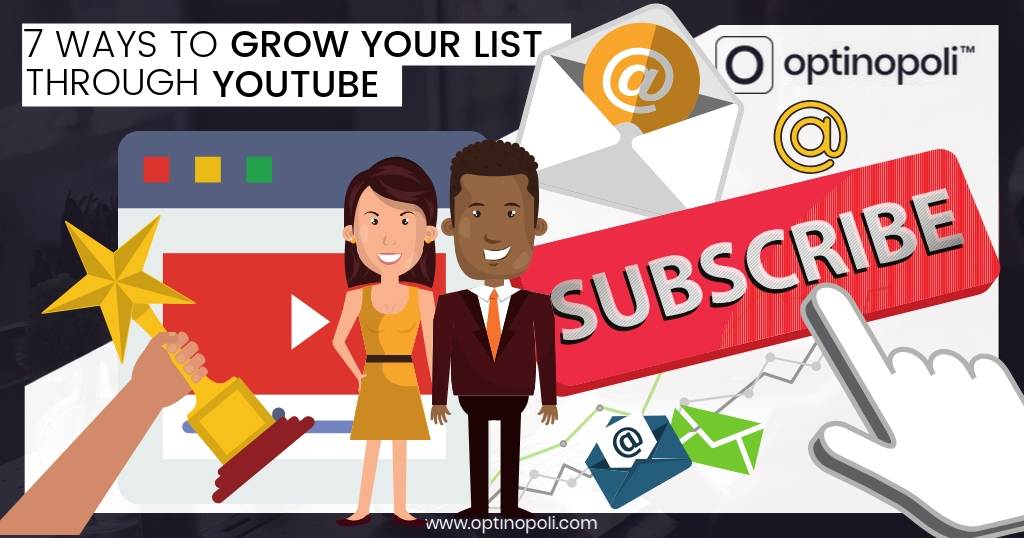
7 Ways to Grow Your List Through YouTube
Consider this. In 2005, YouTube was founded in a garage, attracting millions of dollars of investment even in its first year. In 2006, Google acquired it for over one and a half billion.
It now gets more traffic than any other website bar Google itself. It's also the:
- Second largest search engine.
- Second most popular social media platform.
There are a ton of other amazing stats, including:
- Over 1.9 billion logged-in users are on YouTube every month.
- Every day:
- Over a billion hours of video are watched.
- Billions of video views are generated.
- 6 out of 10 prefer YouTube to live TV.
And of course YouTube users are on multiple devices, more than 70% of them on mobile.
All these stats should convince you of one thing only. If you want to generate leads, add subscribers and grow your list, you need to be on YouTube.
7 ways to grow your list through #YouTube #leadgeneration via @optinopoliClick To TweetLike any good content, a video, when approached the right way, will continue to attract leads into your business for years to come. This post gives you seven ways to ensure they do that.
Even better, once you start creating videos, you can use them to generate leads in other ways too:
- Upload and share the videos on other social platforms, attracting new followers and helping to convert existing ones to email subscribers.
- Add the videos to your blog posts, improving SEO (building future search traffic) and encouraging opt-ins by building engagement with visitors.
How can you get started quickly if you're currently only creating text-based content like blog posts? Simply convert your text-based content into video format. In brief:
- Convert the post into a presentation (upload to SlideShare too, particularly if you're B2B)*.
- Record the screen as you run through the presentation, talking through the points on each slide.
If you want, intersperse the presentation with some face-to-camera or other video shots.
In other words, there really shouldn't be any excuse for you to not be on YouTube! So without further ado, here are...
Seven Ways to Grow Your List Through YouTube
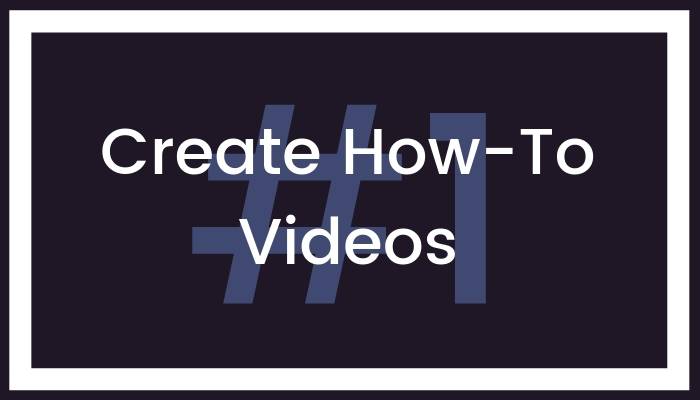
As already stated, YouTube is the #2 search engine in the world.
Yet so many businesses have their sole focus on Google's search engine for getting in front of their market.
You should have a parallel focus on getting found on YouTube too (this actually strengthens your presence on Google Search—you can't lose!)
So how do you get found on YouTube?
Create videos on what YouTubers are actually looking for.
The majority are looking for help on how to do things they've not done before.
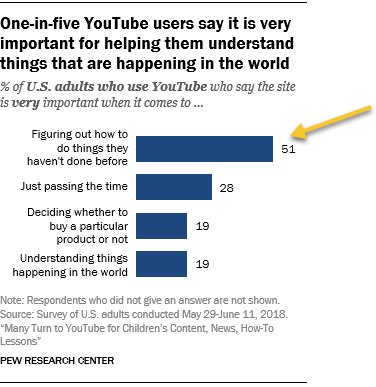
In other words, how-to videos are a great place to start.
How-to videos are the most popular type of #video on #YouTube—and work great for #leadgeneration via @optinopoliClick To TweetWhat should your how-to topic be?
It's brainstorming time. Think about your prospects and customers:
- What are some of the key things they want to know how to do?
- What types of how-to questions do you get asked?
- If you have a support knowledgebase, what are some of the most popular how-to type articles?
You can also:
- Take a look on question-and-answer site, Quora. What are some of the popular how-to questions related to your niche?
- Use YouTube's auto-complete tool on search to get a few basic ideas on the type of how-to questions potential customers are looking for. Start by typing in how to followed by the problem your product or service solves. Here's an example for a business that helps people with back pain such as chiropractors.
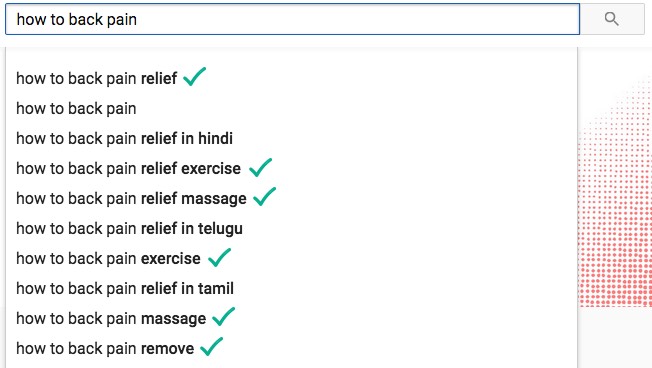
- For a more powerful set of results, use Google's Keyword Planner (within Google Ads, go to Tools & Settings > Planning > Keyword Planner—set up a free account if you don't have one). This reflects Google Search, but people will search for the same on YouTube, and your videos can appear back on Google. Using back pain as an example again, it gives you literally hundreds of how-to queries, most of which are potential titles for how-to videos.
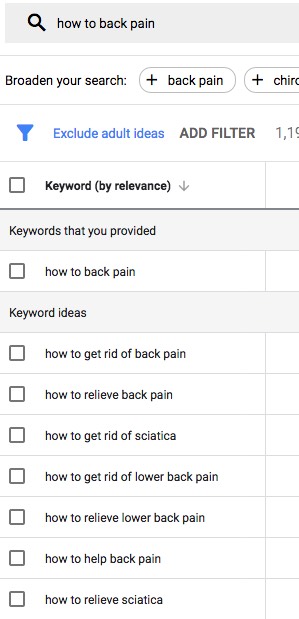
Use the techniques above to help you create a long list of how-to video ideas. A spreadsheet is ideal as you can also use it to plan ahead, keep track of the status of each one, add the URL of videos once published, track performance, and so on.
Google's Keyword Planner can give you hundreds of ideas for how-to #videos on #YouTube via @optinopoliClick To TweetCreating your video
Before getting started, do some planning, and decide the following:
- The general approach you're going to take—professionally polished, or relatively relaxed and informal. There's no right or wrong, both can work just as well in connecting with your audience.
- How you're going to create the videos—for example, screen capture, your computer's in-built webcam, your phone's camera, an in-house videography employee or team, or hiring help from outside. Will you be scripted or unscripted?
- The resources needed—consider whether you'll be needing video cameras, tripods, microphones, lighting and so on. But don't let the lack of these stop you. Your phone is more than likely good enough, and has worked well for thousands of successful how-to videos.
If in doubt, just keep things simple. Go with what you have right now, and start from there. It's far better to just get started, to start publishing videos, and learn to get better at it as you go along. One is better than none.
While there's no room here to go into any depth, to shoot your first video, first sketch out the structure you'll follow.
Provide a rough timeline. What do you want to happen and when?
You might want to split the video into chunks and edit together afterwards, than try to shoot everything in one take.
As a general guide:
- Introduce it—start the video by letting the audience know what you'll be covering.
- Provide the actual content—this is where you deliver the how-to info promised. Be as helpful and give as much value as you can.
- Wrap up—summarize what you've covered.
We'll cover important lead generating CTAs you should include in your video shortly (see #4 below).
Getting your video found
Remember, YouTube is a search engine. You want your videos to rank highly, just like you would for any content on Google Search, so your videos get found and watched.
In many ways, SEO for YouTube is very different to SEO for Google. But in many ways, they are also the same.
#SEO on #YouTube is very different to Google. But also has a lot of similarities. #leadgeneration via @optinopoliClick To TweetOn both Google and YouTube, the content that ranks the highest tends to be the content that offers the most genuine value to users of those sites on the specific topic that someone is searching for.
The difference comes in the indicators—or ranking factors—that both sites use to judge that value, and thereby rank the content accordingly.
The indicators for YouTube should feed directly into how you approach and create your videos. By creating more videos, paying attention to the metrics and experimenting with different approaches, the better your videos are likely to perform over time.
According to Seer, the ranking factors for YouTube are as follows.
Watch time
This reflects how long users spend watching your video. It's the #1 ranking factor on YouTube—the longer you can retain the interest of viewers, the more views you're likely to attract.
Take advantage by encouraging viewers to stick around on YouTube and watch other videos on your channel.
Plus, the more your channel grows, the more likely viewers are to stick around and browse your other videos through natural curiosity.
Channel activity
Factors include comments on a video, and interaction with those comments from yourself and your audience.
Take advantage by asking viewers to leave comments at various points during your video and encourage interaction. Respond to viewer comments quickly.
Number of views
While no longer the main ranking factor, they indicate the video's overall performance and visibility.
Take advantage by sharing links to your YouTube videos on social and with your email list, and embedding your videos on your website.
With the latter, your videos might be based on existing blog posts, or can help provide additional information. So embed the videos wherever relevant.
Interestingly, embedding videos on your blog also:
- Positively impacts your blog's SEO.
- Helps attract new subscribers for your YouTube channel.
Likes and dislikes
This metric shows the level of the viewer's satisfaction with your video. It can help indicate how well you deliver on the promise of your video's title.
Take advantage by letting viewers know you'd really appreciate a Thumbs up if they've found your video useful.
Playlists and favorites
Measured when viewers Favorite your video or add it to a playlist.
Take advantage by letting viewers know they can refer back to the information in your video in future by adding it to their Favorites list, a type of bookmarking. From there, they can also add to a playlist as required.
#YouTube factors for #SEO include watch time, channel activity, views and other engagement indicators via @optinopoliClick To Tweet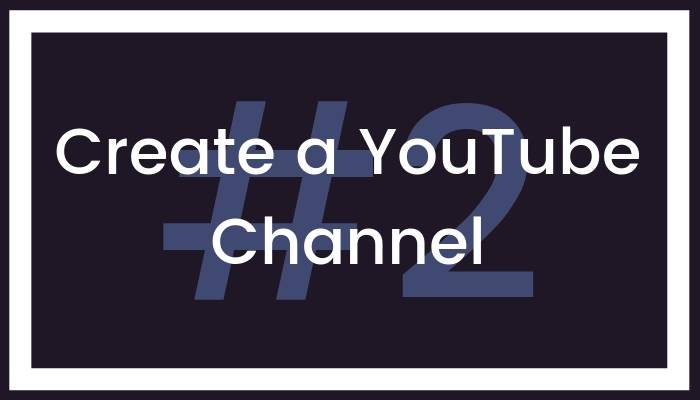
For obvious reasons, the section above on creating your video is by far the largest in this post. You'll have noticed multiple references to your YouTube channel.
In fact, you can't do much without one. You need a channel to be able to upload videos, comment, and make playlists.
A channel is a bit like a Facebook Page, Twitter profile or Instagram profile page. It's the home for your business on YouTube.
You can either create a personal channel, or create a channel with say a business name.
There's a significant difference between the two, and it's important to set it up in the right way from the beginning.
With a personal channel, only you will be able to manage it via your Google Account.
With a business channel created via a Brand Account, you can change channel owners and managers.
The latter gives you more flexibility, and is more adaptable to changes in your business as it grows.
Create a #YouTube channel via a Brand Account so others can help manage it as your #business grows via @optinopoliClick To TweetHere's how to create one:
- Go to YouTube's channel switcher page.
- Click to create a new channel.
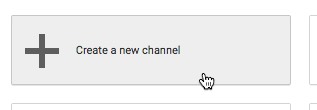
- You'll be prompted to create a Brand Account, which effectively becomes your channel.

You can now upload videos to your channel.
How does your YouTube channel grow your list?
By regularly uploading videos, you attract subscribers to your YouTube channel. As your channel grows, this translates into subscribers to your email list via CTAs added to your videos.
YouTube users can subscribe to your channel via a button underneath your videos, or on your channel page.
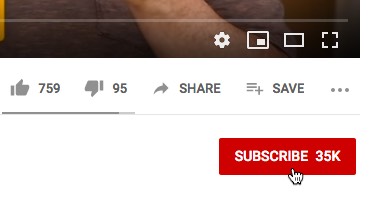
By subscribing to your channel, viewers will see more of your content:
- New videos show up in their Subscriptions feed.

- They may get notifications when you publish new content.
This grows your email list as follows:
- The more of your videos that channel subscribers view, the more opportunities they will see to join your email list—and, as they get to know you, the more likely it is they will do so.
- As the number of subscribers to your channel grows, the metrics and visibility of your videos will rise, attracting a wider audience.
Over time, a snowball effect develops. By regularly working on and improving your YouTube channel, it becomes a powerhouse for growing your email list.
By consistently building your #YouTube channel, it becomes a growth powerhouse for your #emaillist via @optinopoliClick To Tweet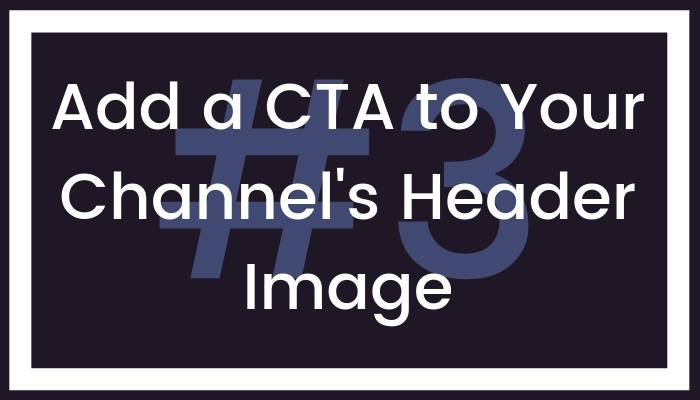
Also referred to as Channel Art, the header image is the first thing people see when hitting your channel.
So it's prime territory for a CTA (call to action). And you can add clickable links to your Channel Art.
One possible approach would be to refer to a Lead Magnet along with a URL in your Channel Art, and provide a clickable link to go get it.
However, this might not be the smartest route.
Sure, you might get a few signing up out of curiosity. But for long-term list growth, it's more beneficial to grow your channel's subscribers.
That way, you attract more viewers to your videos (along with more channel subscribers), increase your audience, and thus have a bigger impact on your email list growth in the long term.
Once you've delivered value through your videos, people will be more inclined to join your email list.
Add a #CTA to your #YouTube Channel Art to grow your channel and reach a wider audience via @optinopoliClick To TweetHow to add a channel subscribe CTA to your Channel Art
On YouTube, you can add what's called Link Overlays to your Channel Art.
One of these can be a link to subscribe to your channel. To create the link, you just need to add ?sub_confirmation=1 to the end of your channel's URL.
The link to use should look like this:
https://www.youtube.com/channel/CHANNELNAME?sub_confirmation=1
Note that when you first get started, the CHANNELNAME bit will just be a set of mixed up numbers and letters—as your channel grows, you'll be able to customize it.
To add to your Channel Art, first click the CUSTOMIZE CHANNEL button.

Click the About tab:
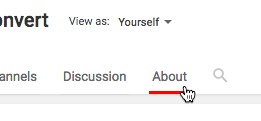
You'll see a Links section. Click the button provided to add a link, and then the following Add button too.
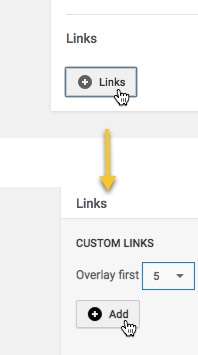
Add your CTA text and your link, and click Done.
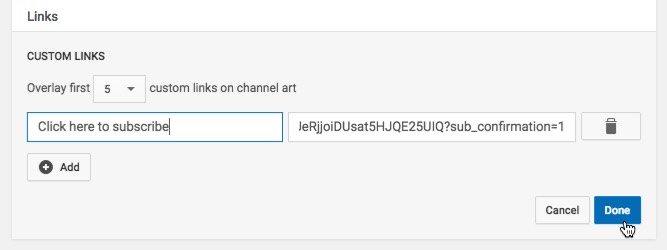
Return to your channel page, and your new link will be displayed.
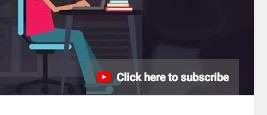
If you wish, you can also add additional links for say your Facebook and Twitter profiles.
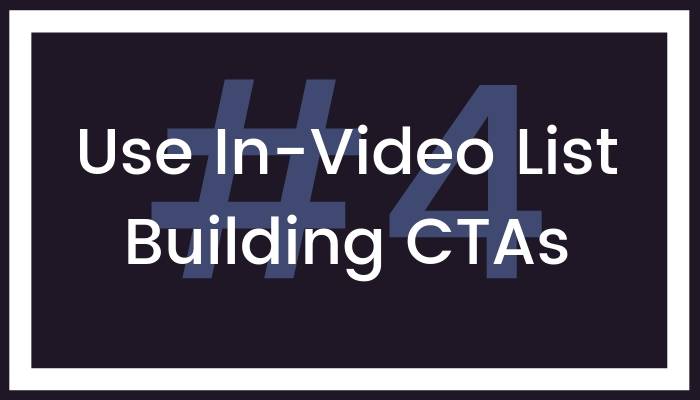
As your channel grows, YouTube gives you add-on features, including the ability to add links people can click on in the video itself (see #6 below on YouTube cards), such as to a lead gen page.
But what can you do when you're in the early stages?
You can still grow your email list by including CTAs within your video and showing on-screen links they can go visit by typing into a browser.
You can include CTAs at any point within the video, but they'll have more effect once you've delivered some value for your audience, particularly towards the end when you're wrapping up.
However, as already mentioned, growing your channel and the visibility of your videos is just as important for attracting leads as more direct lead generation CTAs.
Growing your #YouTube channel is just as important for #leadgeneration as adding #leadgen #CTAs via @optinopoliClick To TweetSo don't forget to include the following CTAs within your videos:
- Ask them to subscribe to your channel—this is an easy click of a button, gives you more opportunities in future to convert them into email leads, and helps attract new audiences to your videos.
- Ask them to give you a "Thumbs up" if they found your video helpful—this is one of the YouTube SEO metrics discussed above.
- Ask them to comment and respond to the comments of others—another important SEO metric. Remember to respond to comments yourself too.
- Ask them to watch more videos on your channel—again this gives positive signals to YouTube and helps you attract new viewers.
But the growth of your channel won't do much for growing your email list unless you also...
Ask them to join your email list
After all, your YouTube channel isn't a platform you control. YouTube does. It could disappear tomorrow, or your channel could be removed or suspended.
Ultimately, the role of your YouTube channel is to convert members of your audience—people you have a loose relationship with but can't contact directly—into leads you can sell to via direct one-to-one communication, including email.
You need to convert your success on YouTube into an asset you have full control over.
To do that, include CTAs that encourage them to join your email list.
Add #CTAs to your #YouTube videos that help grow your #emaillist — offer some of value and relevance via @optinopoliClick To TweetOffer them something of value, ideally something that has a lot of relevance and adds value to what they're watching.
A content upgrade is ideal.
If you're basing your video on a blog post that has a content upgrade, offer the same one in your video.
Otherwise, think about the type of resource that would be really helpful for viewers, add more value and encourage them to join your list.
Whatever it is, your offer must be evergreen. Remember your video could be attracting leads for years to come, so you don't want your CTA to end up sounding outdated.
Build the perceived value of joining your list by letting them know that's where you share your best content.
You'll need a page they can go to join. One of the easiest ways is to use a Landing Mat, a type of high-conversion lead gen page you can set up in just a minute or two.
Provide a simple link that redirects to this page—something like yourdomain.com/12 is ideal.
The link needs to be:
- Really easy to remember and type in.
- Trackable, so you know how well your video is performing.
A Landing Mat will give you these stats, or you can redirect to a separate lead gen page that uses UTM parameters.
For example, yourdomain.com/12 could redirect to yourdomain.com/youtube/upgrade?utm_source=youtube&utm_medium=channelname&utm_campaign=videoid.
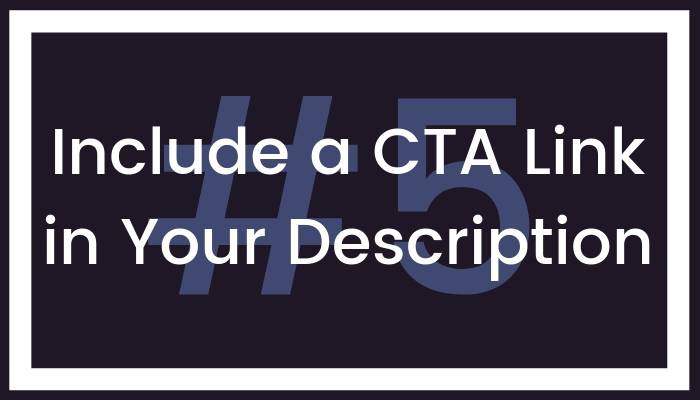
Make it really easy for people to sign up by also including your lead generating signup link in your description.
The description is where you provide more info about what's in your video. If your video offers a valuable free resource (your lead gen CTA), refer to it here too and provide the link.
You can mention this clickable link in your video, but remember some people may be watching the video as an embed on another website. So use language such as, If you're watching this on YouTube....
Don't forget to include a #leadgen #CTA in the description of your #YouTube videos via @optinopoliClick To Tweet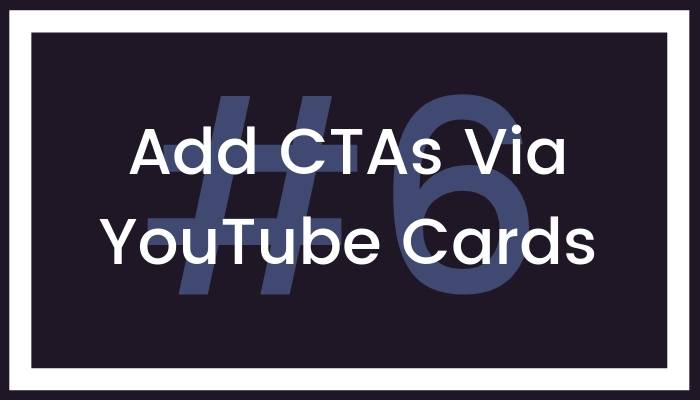
Once you’ve built up enough videos and subscribers to your channel, you can join YouTube’s Partner Program (YPP).
Among other benefits, it means you can add a card to your video that viewers can click, such as to a lead gen page.
You can also add cards that encourage viewers to watch other videos on your channel (you don't need to be in YPP for this type of card).
How do you join YPP?
To become eligible for YPP, the current requirements are that you need have achieved at least:
- 4,000 hours of watchtime within the past 12 months.
- 1,000 subscribers.
If you’re just starting out, where it can feel very slow with rewards for your efforts few and far between, this may sound like an impossible target.
But your metrics, results and rewards grow over time. Be patient.
By continuing to work on your channel, it’s perfectly achievable.
And while you're waiting, you can still add a card to promote another video, giving you SEO benefits and helping to grow your channel.
While it can take anywhere from a few months to three years for a regularly updated channel, follow these tips to become eligible for YPP sooner rather than later:
- Regularly create and upload new content.
- Optimize your videos for SEO so they get found more easily.
- Network with other video creators in your niche, particular more popular ones with higher subscriber numbers.
- Regularly promote your channel and your video content on your website, your blog through email, on social and via other content platforms (for example, you can add video to content on Medium and Quora).
- Advertise your channel.
Once you're eligible, follow these instructions to apply to join YPP.
You can also earn money from your videos via YPP, by permitting advertising in your videos, but it's your choice whether to monetize them in this way.
Leads for your own business in order to sell your own products and services should be more valuable. By turning off the advertising, you can keep viewers focused on your own lead gen CTAs within the video and maximize your returns.
Add #YouTube cards to your #videos to grow your #emaillist, and help grow your channel via @optinopoliClick To TweetHow to add YouTube cards to your video
From YouTube's Creator Academy:
Cards work well when they are placed in conjunction with scripted calls to action ... [they] are convenient because they give the viewer an option to click.
Here's a brief overview from YouTube on how they work:
To add a card to your video:
- Click the top-right profile icon, and click through to YouTube Studio.
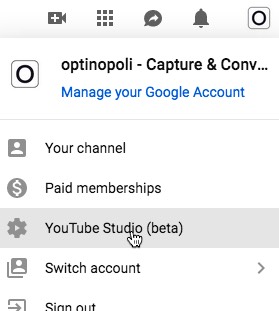
- At the time of writing I was only able to add a card via Creator Studio Classic—click the link at the very bottom of the left-hand navigation.
- Select the video you want to add a card to, and select Edit > Cards
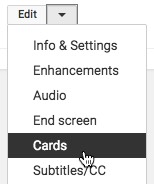
If you're in YPP, you'll be able to select Add card, and then choose Link. You can link to any page on your channel's associated website.
Otherwise, you can link to another video on your channel.
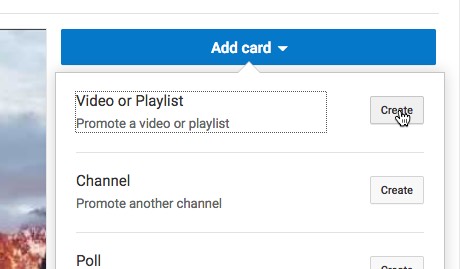
You can customize the text shown and adjust where it shows within your video.
Here's one where the card promotes the next video in a series:
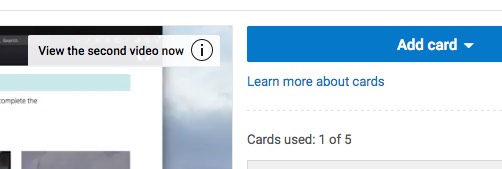
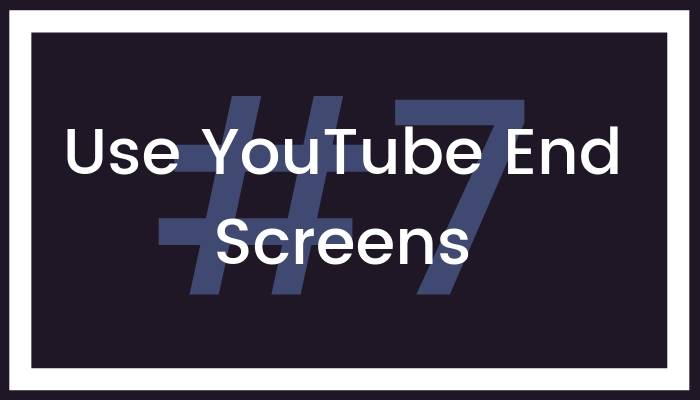
YouTube's end screens direct viewers to do something else at the end of your video. You can promote up to four different things, such as:
- Ask viewers to subscribe to your channel.
- Suggest another video to watch.
- Link to your website.
Again, you have to be in YPP (see #6 above) to be able to use an end screen that links to your associated website.
If you're not in YPP, you can instead show an end screen that:
- Promotes another video.
- Encourages viewers to subscribe to your channel.
To add an end screen, as above go to YouTube Studio, and from there to Creator Studio Classic.
Add end screens to your #YouTube videos to grow your #emaillist and promote your YouTube channel via @optinopoliClick To TweetSelect the video, and then End screen from the top bar.
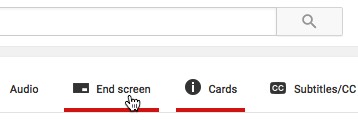
Select the Link option if enabled.
Otherwise, choose the Video or Playlist option, and select the video you're suggesting they watch next.
You can then add a further option to promote subscriptions to your channel.
Move the elements around on the end screen as desired, and click to Save.
The end result will look something like this. This is from the first video in a series of three to help new users get started with optinopoli™. The end screen shows:
- The channel icon top left—hovering over it with the mouse shows the option to subscribe to the channel.
- The next video in the series top right, ready for immediate watching.
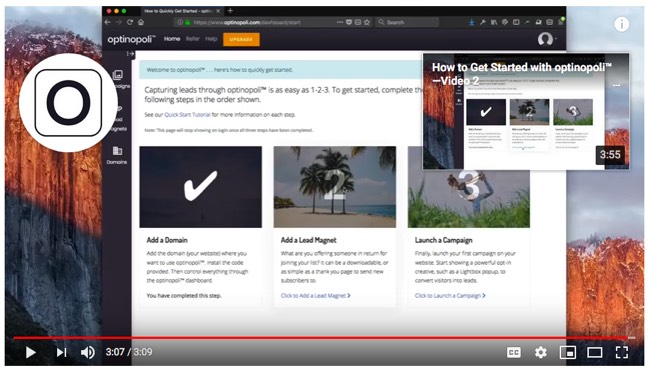
To Conclude
You should now be ready to take full advantage of the world's second biggest search engine, second biggest social media platform and second most trafficked website to grow your list.
Start publishing videos on YouTube and, by approaching it in the right way, they'll continue delivering leads for your business for months to come. Not only that, but as you publish more videos, and become more proficient at doing so, the benefits start to compound.
As a quick refresher of these seven ways to grow your list through YouTube, start by (1) creating how-to videos, the most popular type of video. (2) Publish these through a YouTube channel, preferably created via a Brand Account. (3) Include a CTA in your channel's header image that helps grow your channel and expand your audience, all potential prospects for your list.
(4) In your video, include CTAs to further grow your channel, but also to convert your audience into email subscribers, ideally by offering a relevent and valuable resource for free. Do this by referring to a link for your lead gen page during the video, as well as (5) providing the link in your video's description.
As your channel grows, you'll be able to turn these into clickable links from the video itself via (6) YouTube cards and (7) end screens, increasing lead conversions from your videos. Before then though, you can use the cards and end screens to help grow your channel and build your audience, ultimately giving you a powerhouse for long-term growth of your email list.
Seven ways to grow your #emaillist through #YouTube via @optinopoliClick To Tweet
steve shaw
Steve Shaw is the CEO of optinopoli™, next-generation lead capture and sales conversion technology—click here for more info.
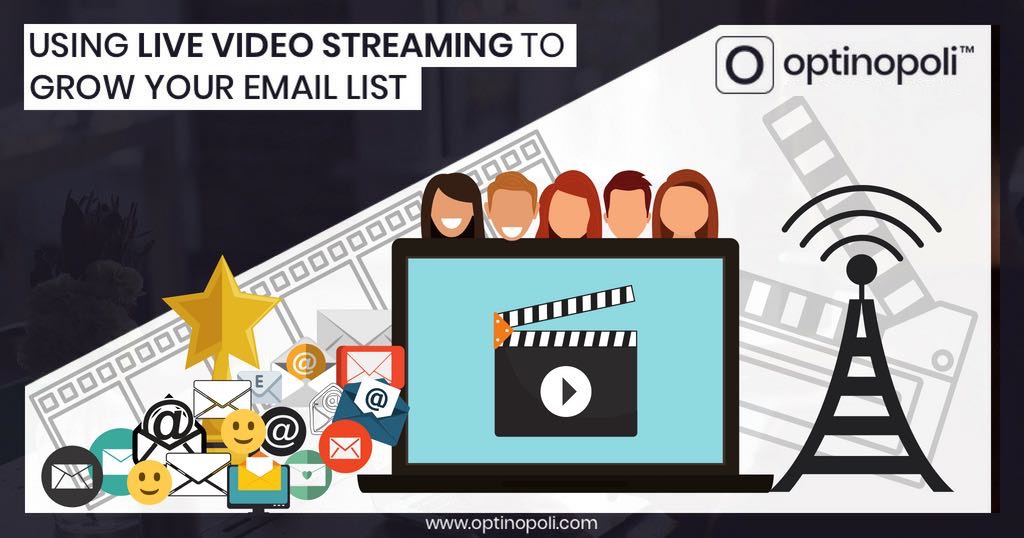
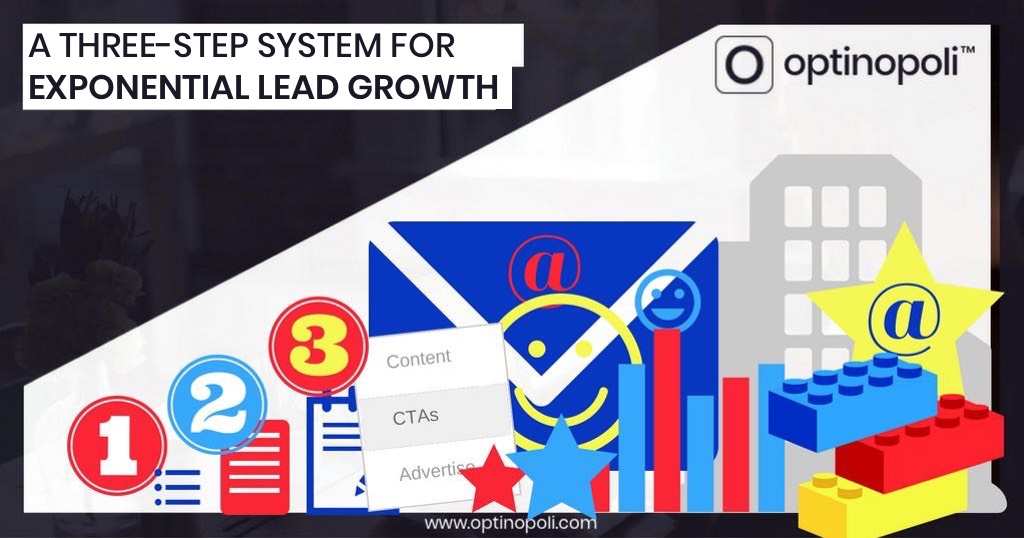

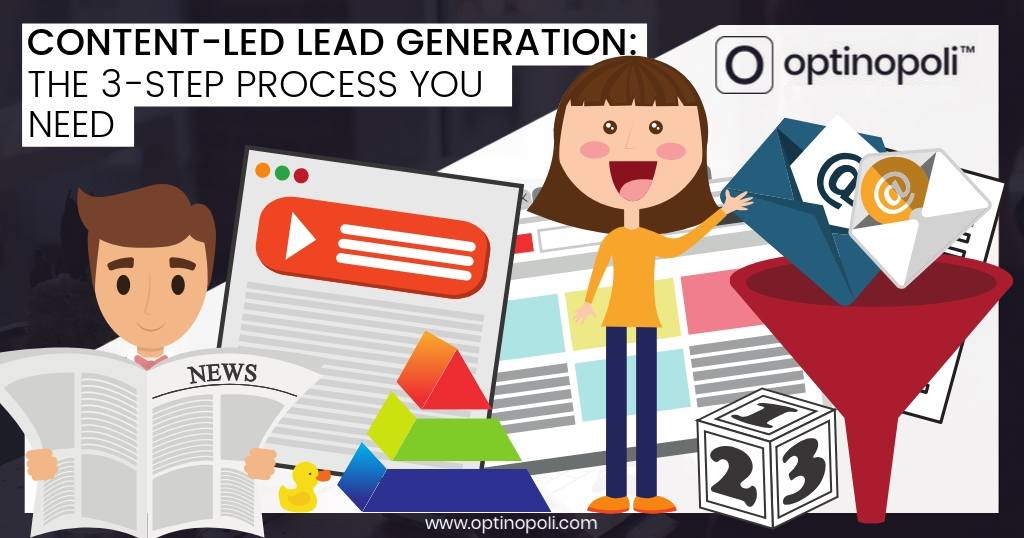
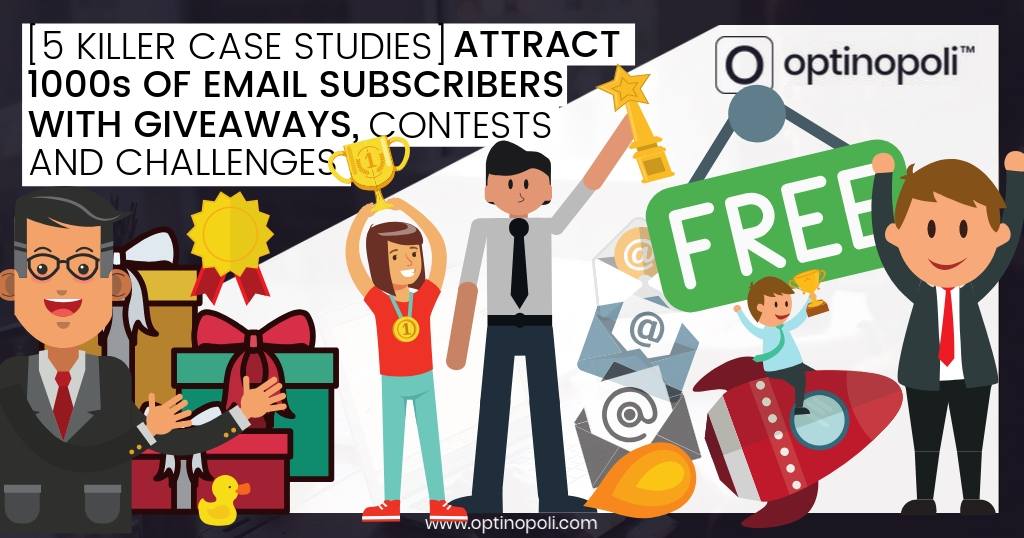
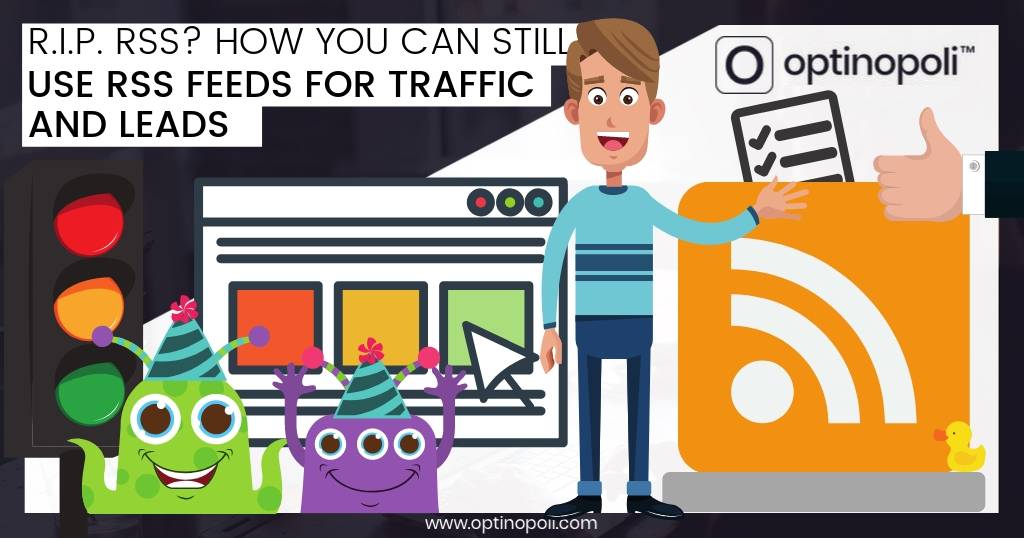
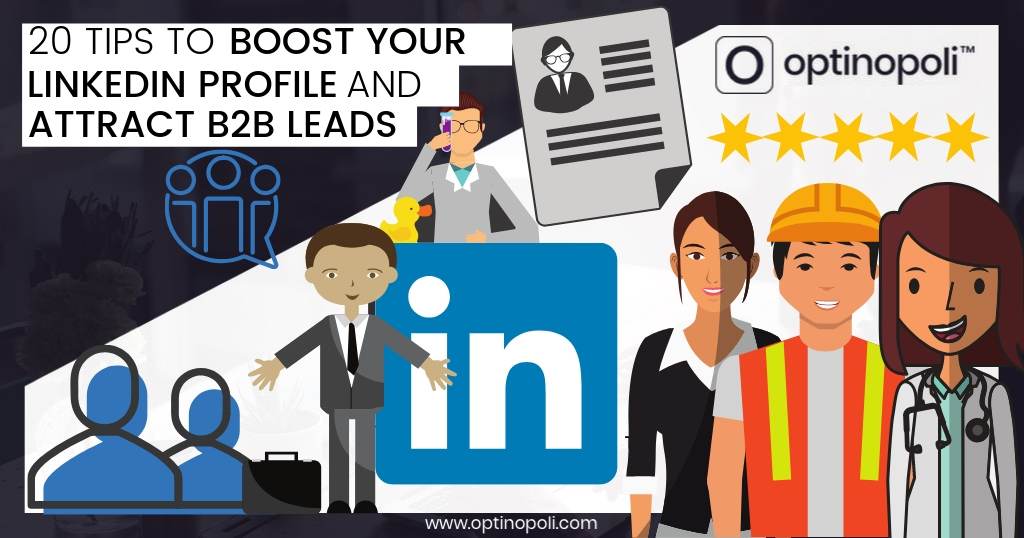
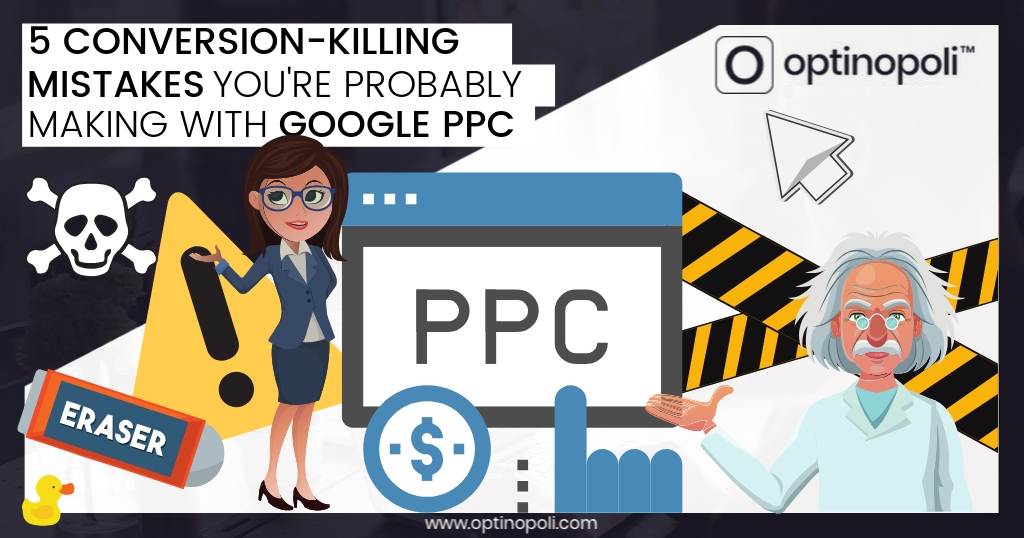
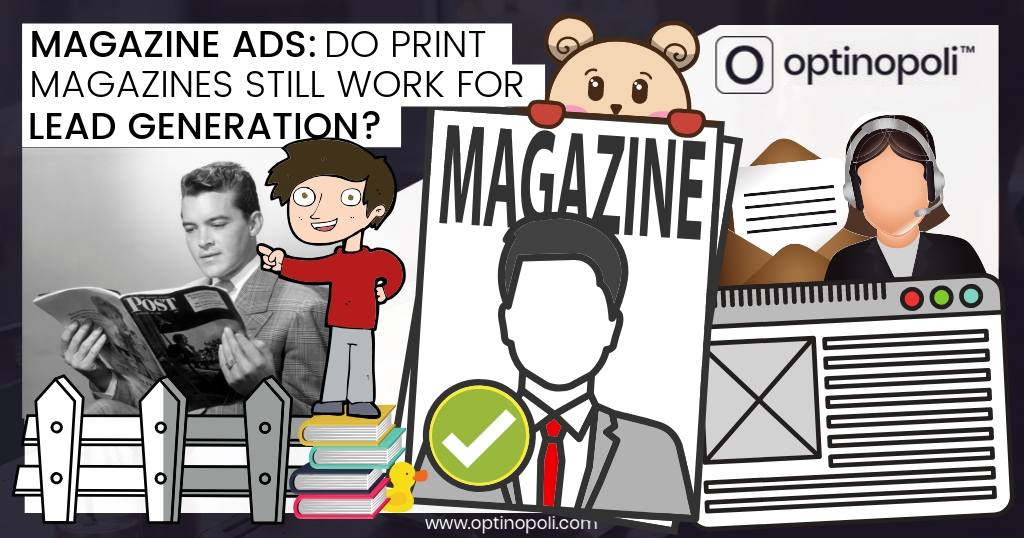
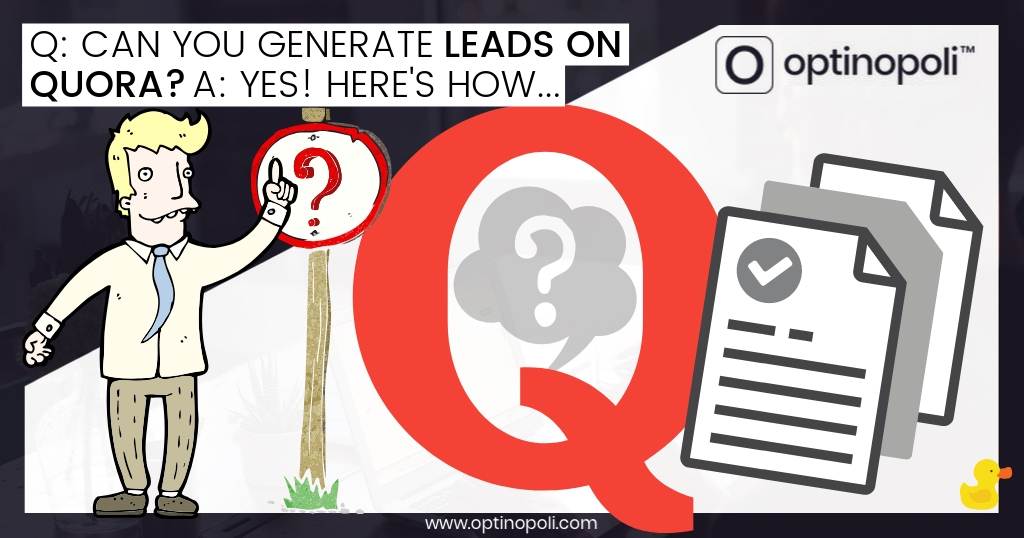
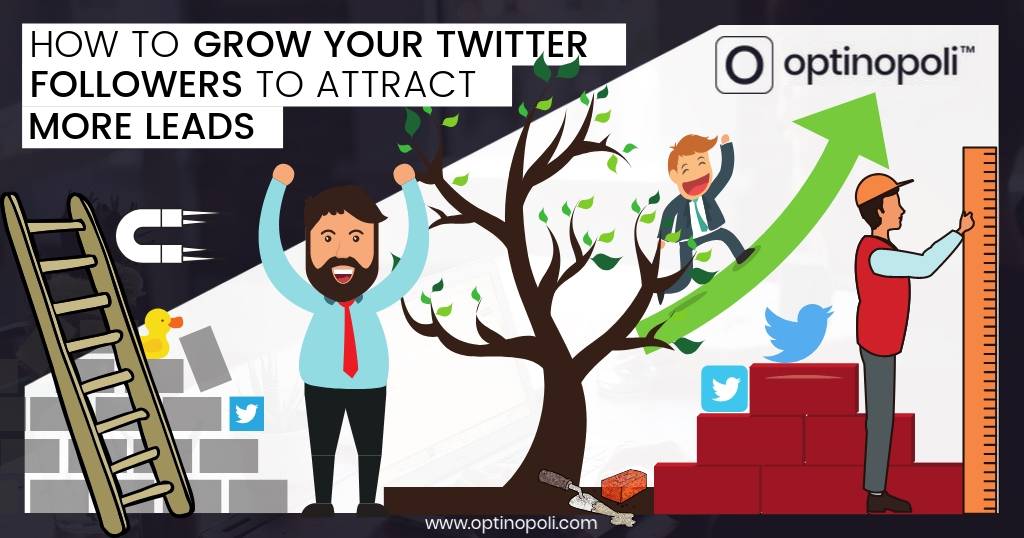
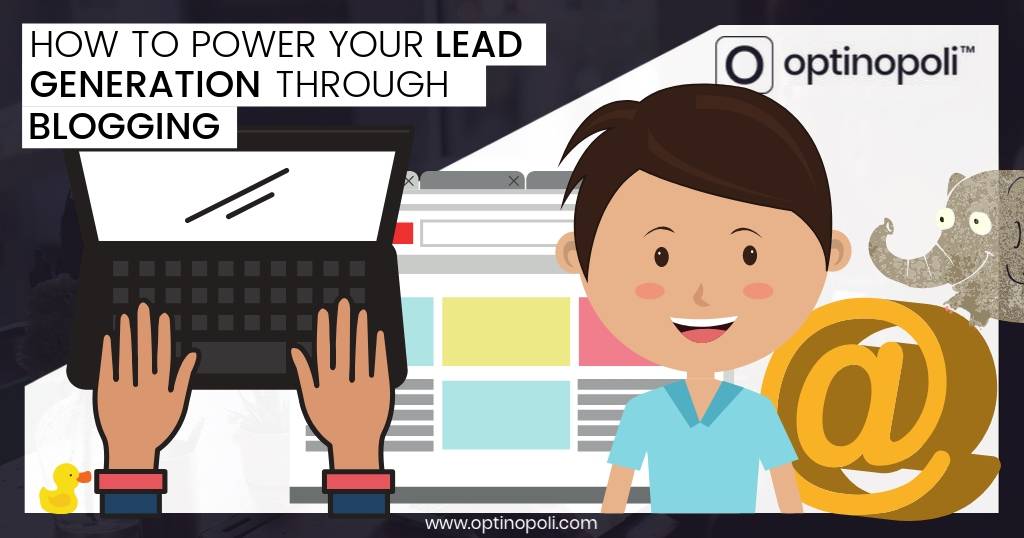
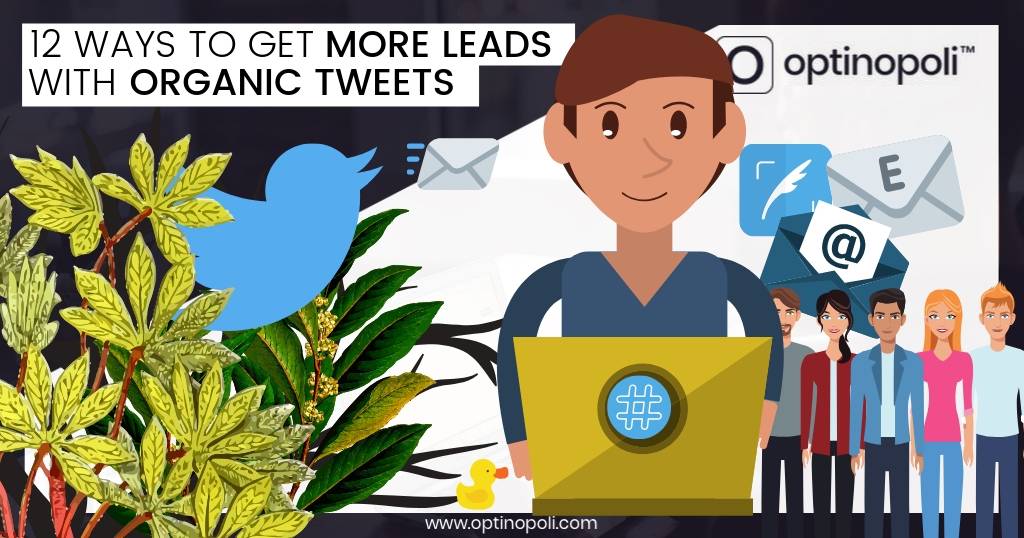
Comments